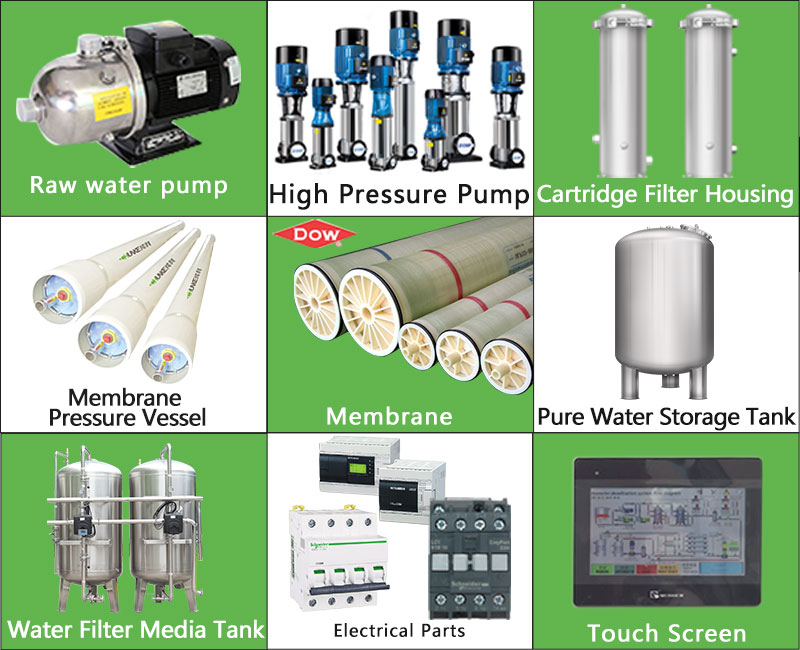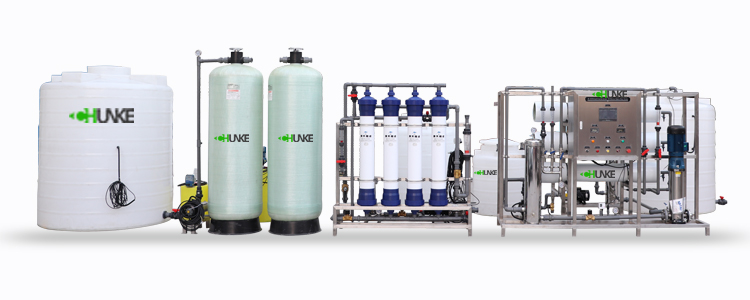Which water filter can remove iron from water?
In some areas, the iron content in groundwater and tap water exceeds the standard, resulting in frequent water quality problems. Although iron is an essential trace element for the human body, excessive levels in drinking water can affect the taste and even pose a potential threat to health.
So, which water filter can effectively remove iron from water? This news will provide you with a detailed analysis of the working principles, advantages and disadvantages of various iron removal water filters and their applicable scenarios.

The source of iron in water and its hazards
The iron in water usually exists in the form of divalent iron ions (Fe²⁺) and trivalent iron ions (Fe³⁺), mainly from the following aspects:
1. Geological factors: When groundwater passes through iron-containing strata, it dissolves the iron in the minerals.
2. Pipeline corrosion: Rusty old water pipelines can also cause iron to enter the water.
3. Industrial pollution: Some industrial wastewater contains a large amount of iron, which pollutes the water source.
Water with high iron content not only has a metallic taste, but also causes rust on clothing and sanitary ware, and long-term drinking may even cause gastrointestinal discomfort. Therefore, removing iron from water has become an important part of ensuring water quality safety.
Which filter can remove iron from water?
Filters that can remove iron from water are:
1. Oxidation filter
2. Ion exchange resin filter
3. Reverse osmosis (RO) filter
4. Manganese sand filter
5. Green sand filter
There are many filters on the market that can effectively remove iron in different forms of iron in water. Below I will introduce the working principles and characteristics of these 5 filters:
1. Oxidation water filter
Oxidation water filter oxidizes divalent iron (Fe²⁺) into trivalent iron (Fe³⁺) and then removes it through the filter medium. Common oxidants include air, chlorine and potassium permanganate.
● Working principle: Use oxidants to oxidize dissolved divalent iron into insoluble trivalent iron hydroxide (Fe(OH)₃), and then remove it through the filter layer.
● Advantages: High treatment efficiency, can remove most iron elements, suitable for various water quality conditions.
● Disadvantages: Oxidants need to be added regularly, and the equipment maintenance cost is high.
2. Ion exchange resin filter
Ion exchange resin filter replaces iron ions in water with harmless sodium ions.
● Working principle: Water flows through a filter bed filled with ion exchange resin, and the sodium ions on the resin are exchanged with iron ions in the water to remove the iron ions.
● Advantages: The treatment process is simple, no chemical agents need to be added, and it is suitable for households and small water supply systems.
● Disadvantages: The resin needs to be regenerated regularly, and sodium ions may be introduced when regenerated with salt.
3. Reverse osmosis (RO) filter
Reverse osmosis filter uses the selectivity of semipermeable membrane to remove soluble iron ions in water.
● Working principle: Under high pressure, water molecules pass through the reverse osmosis membrane, while impurities such as iron ions are retained on one side of the membrane to achieve water purification.
● Advantages: It can remove almost all soluble impurities, including iron ions, and the purification effect is significant.
● Disadvantages: The initial investment is high, the system operation requires a high water pressure, and the wastewater ratio is high.
4. Manganese sand filter
The manganese sand filter uses the catalytic effect of manganese sand to oxidize the divalent iron in the water to trivalent iron, and then remove it by filtration.
● Working principle: The surface of manganese sand has catalytic activity, which can accelerate the oxidation process of divalent iron, forming insoluble trivalent iron compounds, which are intercepted by the sand layer.
● Advantages: Large processing capacity, suitable for medium and large water supply systems, low maintenance cost.
● Disadvantages: The initial treatment effect may not be as good as the reverse osmosis system, but it is suitable for treating large flow water.
5. Green sand filter
The green sand filter is similar to the manganese sand filter, but uses green sand as the filter material, which also has catalytic oxidation.
● Working principle: The oxidation and adsorption capacity of green sand is used to oxidize divalent iron into trivalent iron, and then it is removed through the sand layer.
● Advantages: The filter material has a long life and is suitable for various water qualities, especially high iron content water.
● Disadvantages: The initial investment is high, and the filter material needs to be backwashed and regenerated regularly.

How to choose a suitable iron removal filter for me?
Choosing a suitable iron removal filter requires comprehensive consideration of water quality, processing volume requirements and economic costs. Here are a few key factors:
1. Water quality testing: Before choosing a water filter, it is recommended to conduct a water quality test to clarify the specific content and form of iron in the water (Fe²⁺ or Fe³⁺), as well as other possible contaminants such as manganese and hydrogen sulfide.
2. Processing capacity requirements: Select the appropriate filter model according to the average daily water consumption of the family or unit to ensure that the equipment can meet the actual needs.
3. Economic cost: Both initial investment and long-term operation and maintenance costs are factors that need to be considered. For example, the reverse osmosis system has a high initial investment, but the purification effect is good, which is suitable for families or units with high water quality requirements; while manganese sand and green sand filters have a low initial investment, but are suitable for large-flow water supply systems.
4. Maintenance convenience: Different types of filters have different maintenance requirements. Oxidation filters and ion exchange resin filters require regular addition of reagents or regeneration resins, while reverse osmosis systems require regular replacement of filter membranes and cleaning equipment.

Where are iron removal filters used?
The following are some successful cases of iron removal filters in practical applications:
1. Household drinking water treatment: The iron content of groundwater in some rural areas is high. After installing ion exchange resin filters, iron ions are effectively removed, water quality is improved, and the quality of life of residents is improved.
2. Community water supply system: A newly built community uses manganese sand filters to centrally treat water sources to ensure that the iron content in the water supply meets the standard and the water safety of residents is guaranteed.
3. Industrial water treatment: A food processing plant uses a reverse osmosis system to remove iron ions and other impurities in the water, ensuring the high purity of production water and improving product quality.




